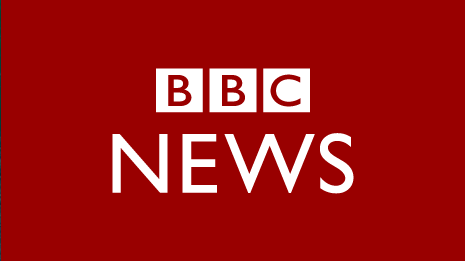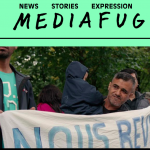“Social Media at BBC News” takes on crisis reporting in a connected world
New book paints a picture of how the world’s largest broadcast news organization has attempted to adapt to new editorial realities ushered in by social media.
[[{“fid”:”4545″,”view_mode”:”default”,”fields”:{“format”:”default”,”field_file_image_alt_text[und][0][value]”:””,”field_file_image_title_text[und][0][value]”:””},”type”:”media”,”attributes”:{“style”:”width: 260px; height: 389px; margin-left: 10px; margin-right: 10px; float: right;”,”class”:”media-element file-default”},”link_text”:null}]]Valerie Belair-Gagnon, Social Media at BBC News: The Re-Making of Crisis Reporting (Routledge, 2015). Hardcover. $140.00.
By Rachel Nixon
On the morning of July 7, 2005, reports of explosions on the London Underground came into BBC News Online. Authorities initially said power surges were to blame. As texts, e-mails, photos and videos poured in from the public, it became clear to those of us in the newsroom that we were dealing with something much more sinister: a series of coordinated attacks by four suicide bombers on the London transit system that killed 52 people and injured hundreds more.
That evening, some of the photos and videos received from passengers led the Six O’Clock News, the BBC’s main newscast. This grainy-but-dramatic footage took viewers straight to the scene of the explosions, where TV news cameras could not go.
Today, newsrooms use so-called UGC—“user-generated content”—all the time to show first-hand accounts of crisis situations such as the aftermath of Nepal’s devastating earthquake. But, 10 years ago, it was unprecedented that the newscast would lead with amateur footage. The day marked a sea change for BBC News in how its journalists used, managed and thought about content generated by citizens equipped with mobile phones and social media accounts.
Valerie Belair-Gagnon’s book paints a detailed picture of how the world’s largest broadcast news organization, steeped in decades of history and journalistic standards and culture, has attempted to adapt to new editorial realities ushered in by social media. The author, who is executive director and research scholar at the Information Society Project at Yale Law School, interviewed BBC journalists and managers, spent time in its newsroom and analyzed reports and studies. Her book offers a forensic account of how BBC News has integrated social media into its journalistic processes around crisis reporting, and of the blurring of the lines between old and new media.
The year 2005 was an important time for BBC News not only because it marked the beginning of a wider organizational acceptance of UGC in news production, but also because it saw the formal creation of the UGC Hub, a unit born out of the need to manage increasing amounts of citizen-generated material. The UGC Hub is among the book’s focal points. Belair-Gagnon documents how its role and practices expanded to sourcing, filtering and verifying material found elsewhere online, allowing access to otherwise hard-to-tell stories such as the Saffron Revolution in Myanmar or the 2010 Haiti earthquake.
Social media content moved from the fringes at the BBC to become increasingly integrated into mainstream news production. But it was not without its challenges, Belair-Gagnon notes. There were a handful of high-profile missteps, including the use of an unverified tweet during the 2008 Mumbai attacks, and a 10-year-old photo initially believed to be of the Syrian massacre in Houla in 2012. Seeking to maintain its reputation for accuracy and impartiality, the BBC established—and subsequently revised several times—guidelines to help its journalists determine how and when to use social media content.
Rather than turning the organization on its head, however, social media became a part of the news production process. Belair-Gagnon writes: “The use of social media in crisis reporting has enabled the BBC to maintain its professional boundaries by reinforcing the norm of impartiality and by highlighting a set of new practices and norms.” This has come to the fore during more recent events such as the Arab Spring, when social media has been prominent, with the BBC serving as a clearinghouse, sorting fact from fiction. Belair-Gagnon refers to a “messy patchwork of old and new media practices and norms”, with the role of curator/filter/authenticator added to those of the traditional journalist.
Beyond newsgathering, Belair-Gagnon notes that social media was a means for audiences to participate in news production, a reflection of increasing “collaboration” between journalists and citizens. Social media indeed allowed more audience content to be reflected on BBC platforms, but “collaboration” may be an overstatement, with its definition seemingly limited to the sharing of UGC. Other scholars have observed that major news organizations opportunistically use content from citizens to fill a vacuum in the immediate aftermath of breaking news, such as natural disasters, only to replace it with material from more official sources, or their own correspondents, later. In the context of the 2010 Haiti quake, Belair-Gagnon says: “Journalists still select, curate and choose if and how they use social media.”
The author also addresses how the BBC, as a public service organization, began using social media at times of crisis to distribute and promote its journalism, specifically via Facebook and Twitter. This issue remains highly pertinent today as news organizations wrestle with their relationships with technology companies and how best to disseminate their content. To an extent, the discussion on distribution also prefigures more recent developments in crisis reporting since the book was written, such as the BBC’s use of WhatsApp to reach audiences with updates on Ebola, and its Viber account for people affected by the Nepal quake.
As a public organization, the BBC is frequently subject to political and public scrutiny. In this respect, Belair-Gagnon is wise to acknowledge the wider forces that were buffeting BBC News around the time of social media’s emergence. In 2004 the BBC published the Neil Report, its internal review into how to learn editorial lessons from the controversial and highly critical Hutton Inquiry. Two years later, a BBC blueprint for the future focused heavily on the impact of digital technologies and the need to rethink how it related to its audiences.
Readers might take issue with some aspects of the book. For example, Belair-Gagnon repeatedly characterizes those at the forefront of the BBC’s nascent social media efforts as “techies.” Undoubtedly the term serves to distinguish between digitally oriented journalists who were leading the change—and those working in more traditional ways. But it risks misrepresenting the expertise of staff who were primarily hired by the BBC News website for their knowledge of journalism and audiences, not, for instance, for their coding abilities. The author later modifies this to “tech-savvy journalists.”
Likewise, the book underplays early tensions within the organization over social media. The author notes here and there that social media was not immediately accepted by all journalists—but does not consistently detail the concerns of those less willing to incorporate it into their storytelling. This may be a function of the people who were interviewed, with those at the forefront of social media more likely to share their opinion. But it leaves somewhat untold an important aspect of newsroom culture change, as new practices struggle to challenge and replace old ones.
Some easily corrected oversights detract from the detailed picture that is presented of an organization in the midst of significant change. Typos and a handful of factual errors are an unnecessary distraction (at one point, for instance, Mark Byford, not Mark Thompson, is identified as the BBC’s then director-general). A certain amount of repetition between chapters prevents the book from hanging together as well as it could, and obscures some of the author’s perceptive observations.
While BBC News is a unique institution in its size and scope, Belair-Gagnon’s account of the organization’s adaptation to social media will be of interest not only to BBC watchers, media historians and researchers but also to journalists seeking to compare, understand and advance change in their own newsrooms. Overall it offers a well-informed analysis of how a famed journalistic powerhouse got to grips with a more open, networked and digital era, learning important lessons about itself and its audience along the way.
[[{“fid”:”4546″,”view_mode”:”default”,”fields”:{“format”:”default”,”field_file_image_alt_text[und][0][value]”:””,”field_file_image_title_text[und][0][value]”:””},”type”:”media”,”attributes”:{“style”:”width: 100px; height: 121px; margin-left: 10px; margin-right: 10px; float: left;”,”class”:”media-element file-default”},”link_text”:null}]]Rachel Nixon was one of the first journalists to join the BBC News website in London, where she worked for nine years, including some of the period covered in this book. After moving to Canada, she was Global News Director of crowdsourced news start-up NowPublic before becoming Senior Director of Digital Media for CBC News. More recently she was Editor-in-Chief of MSN News and Sports in the U.S. Rachel is presently a Political Science MA candidate at the University of British Columbia, focusing on how changes in media and technology impact global and political issues.




